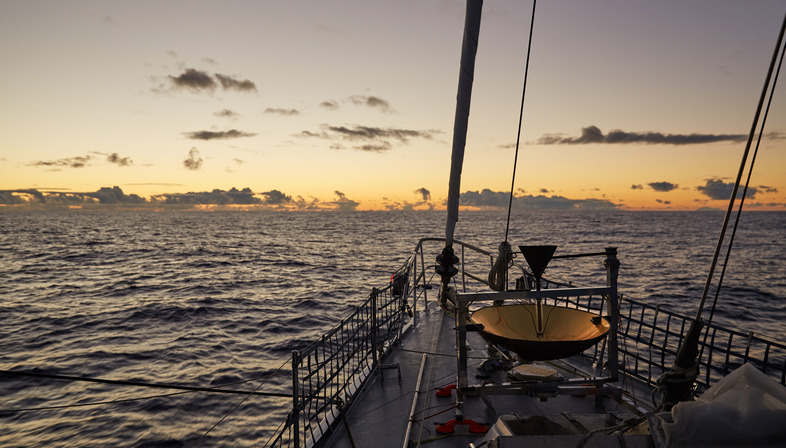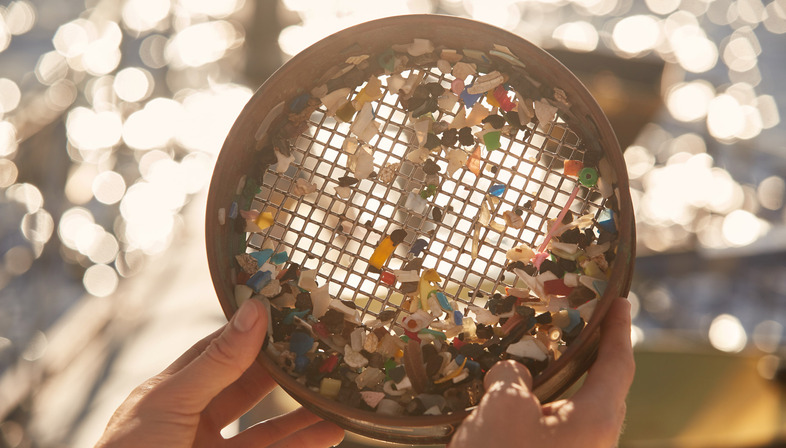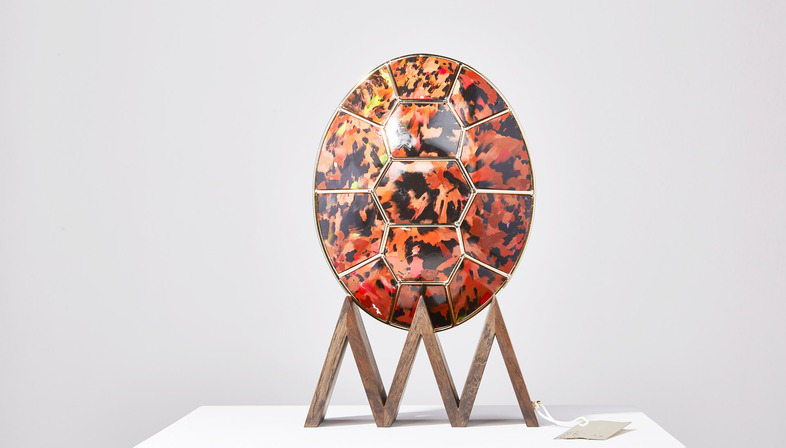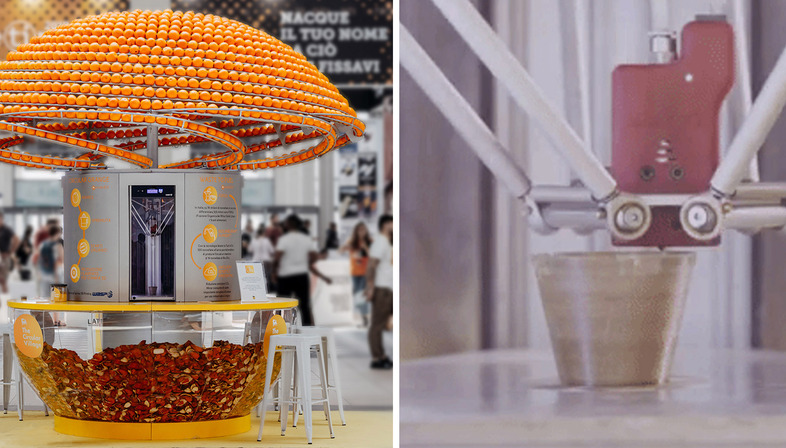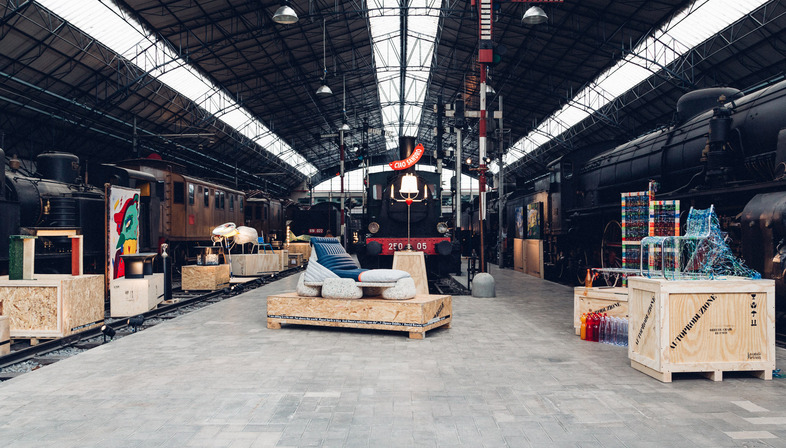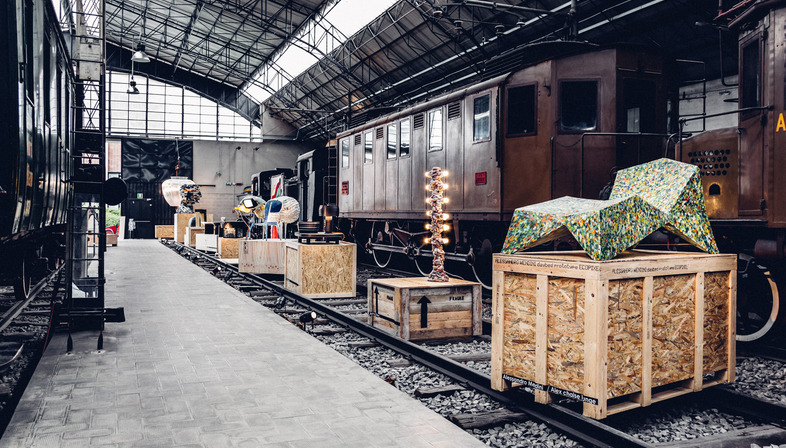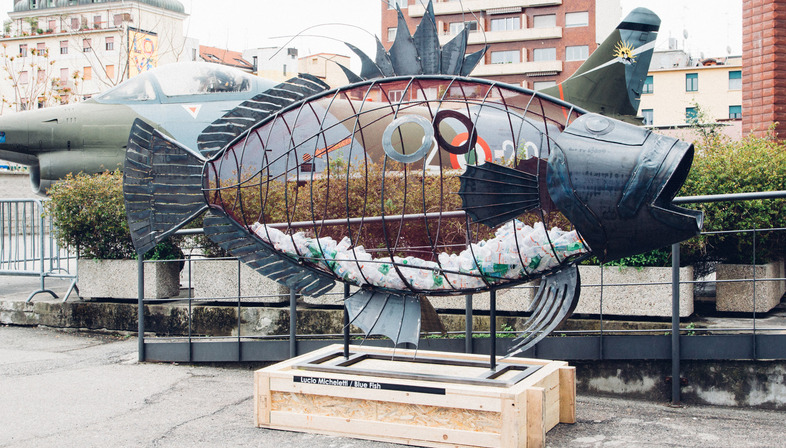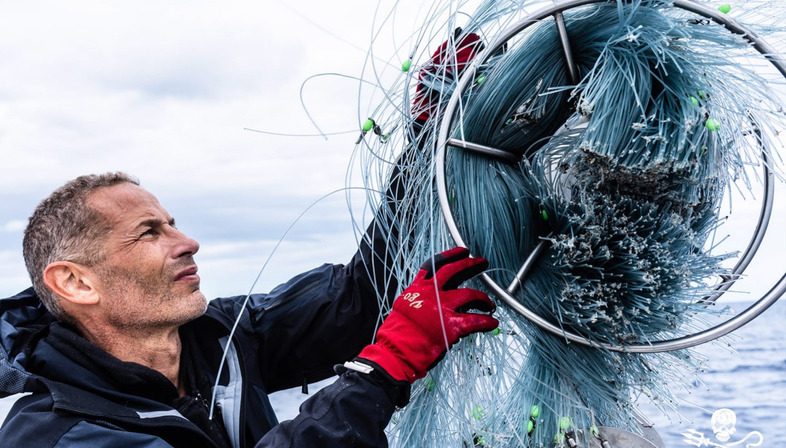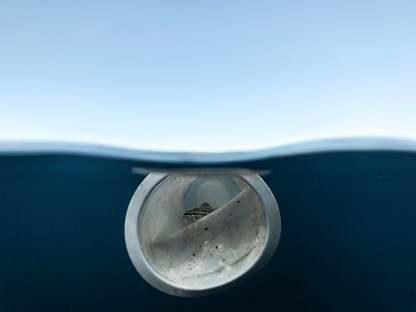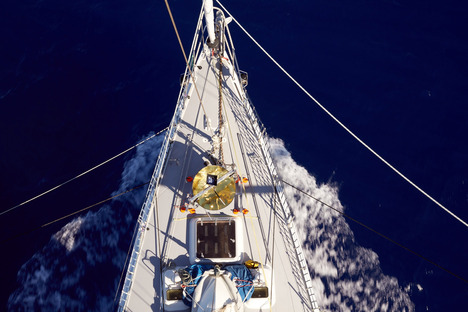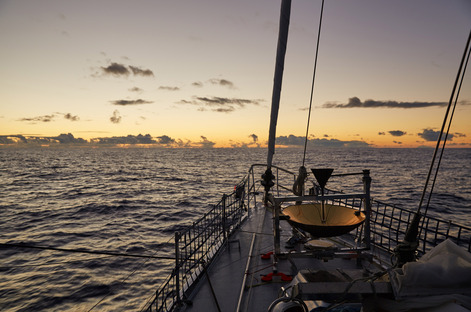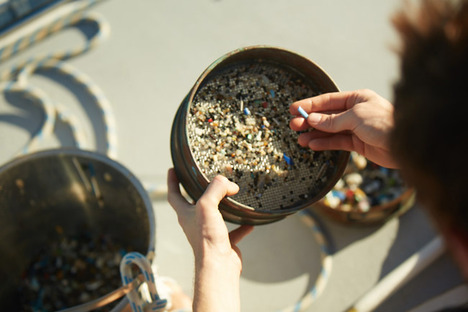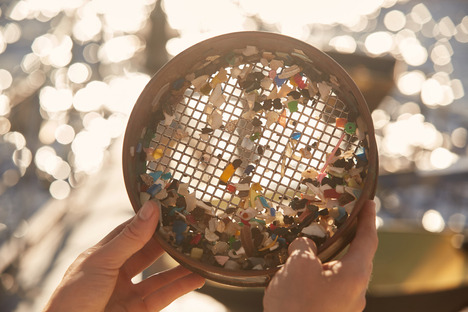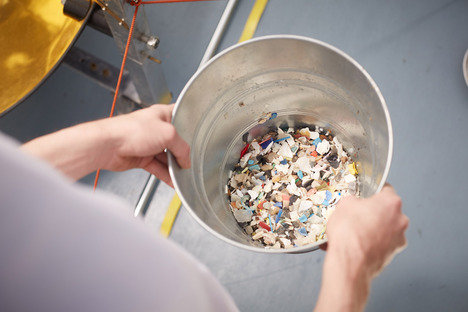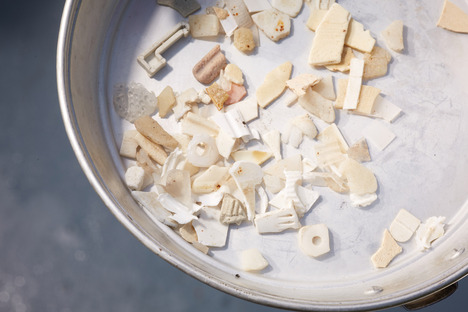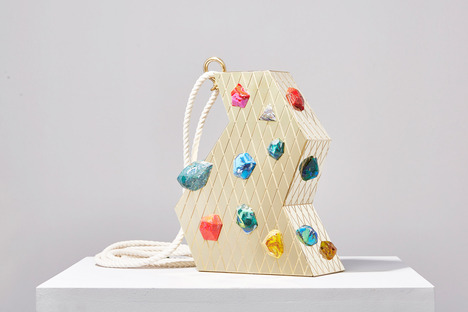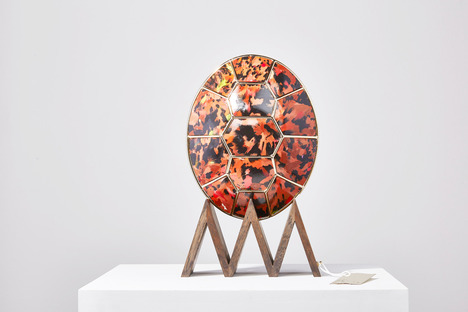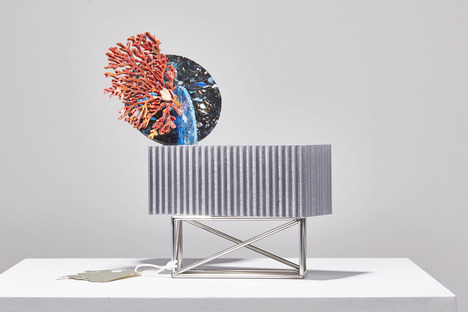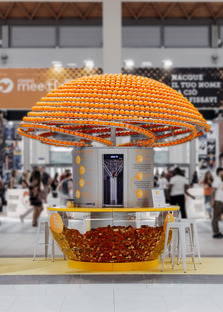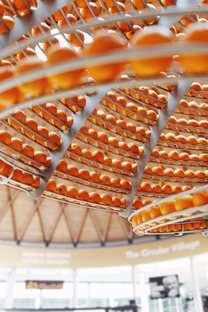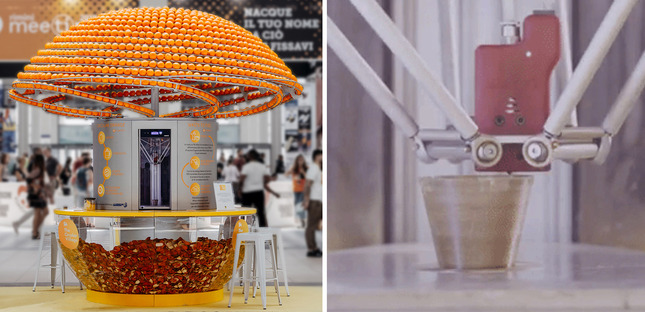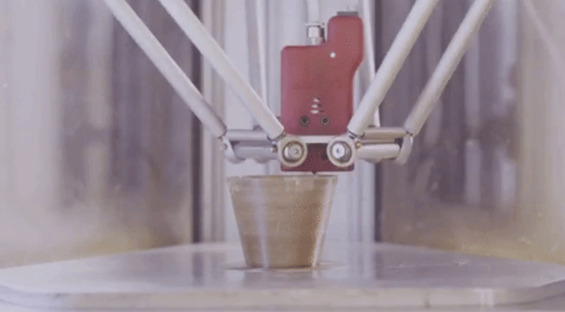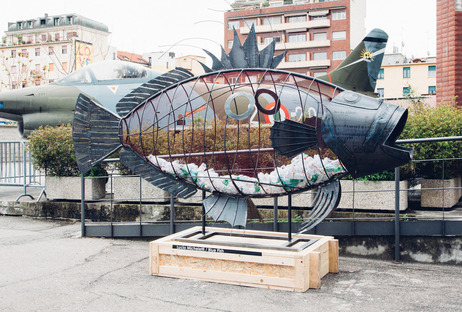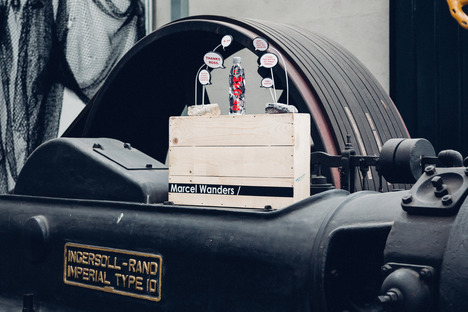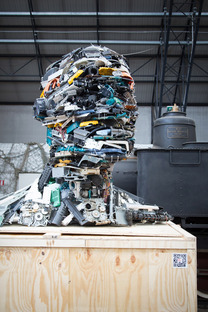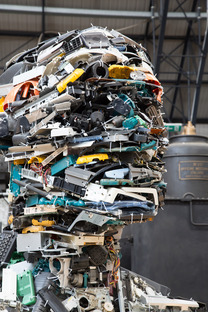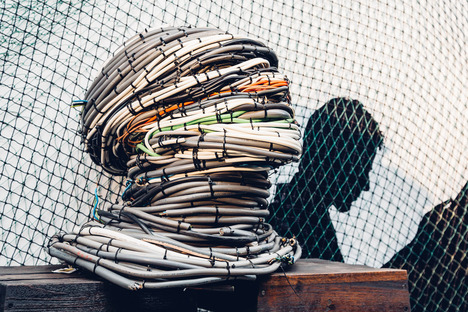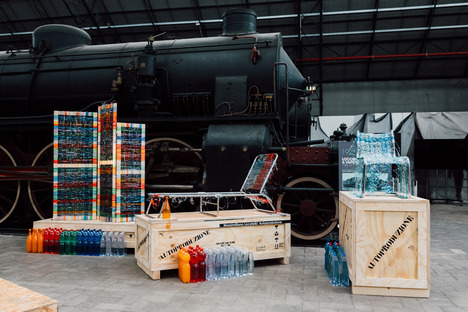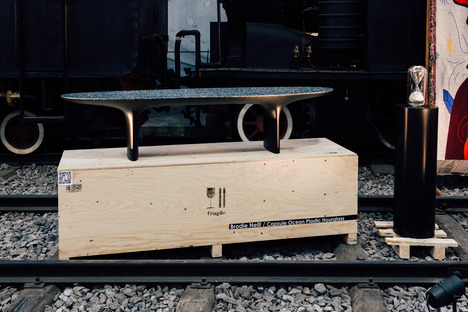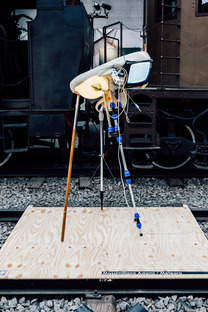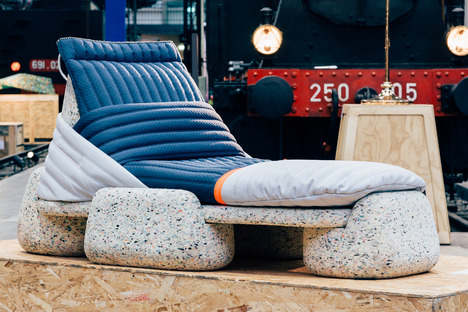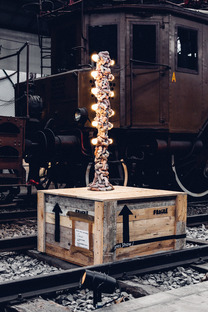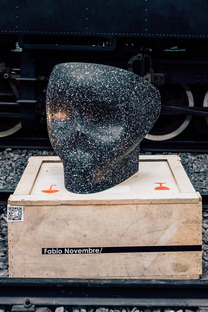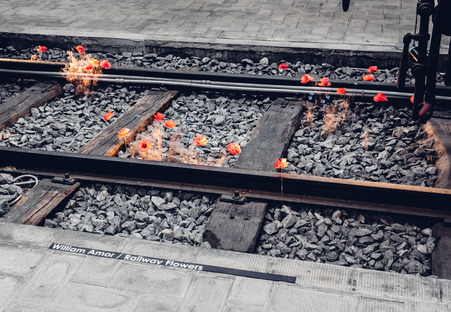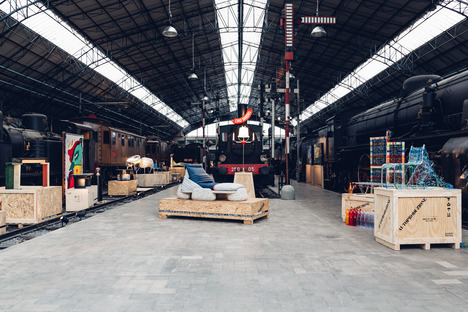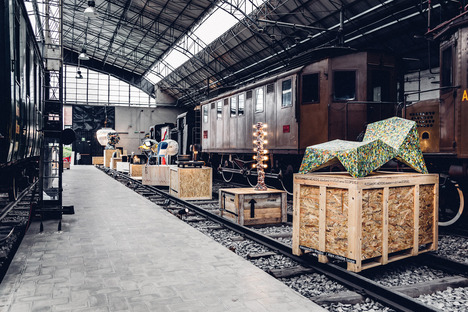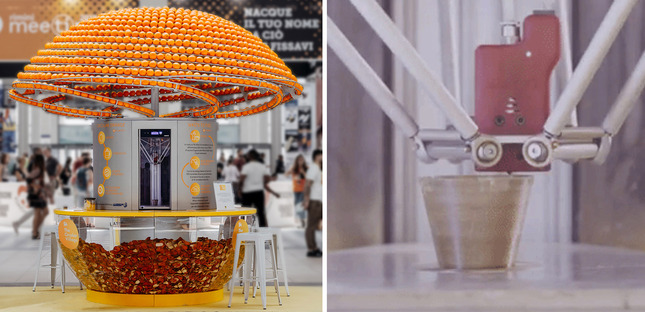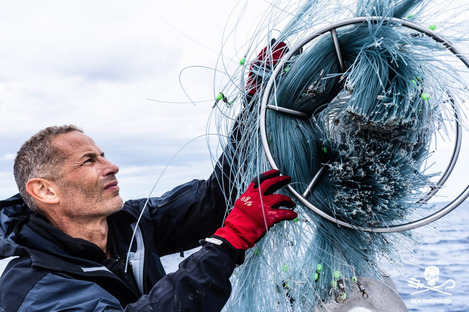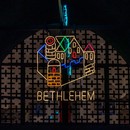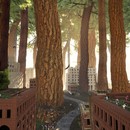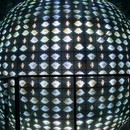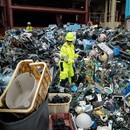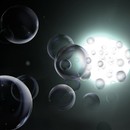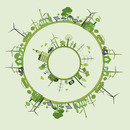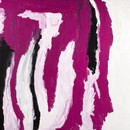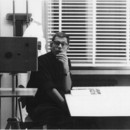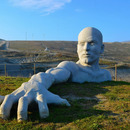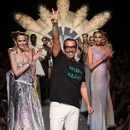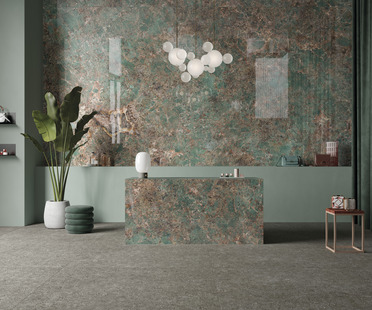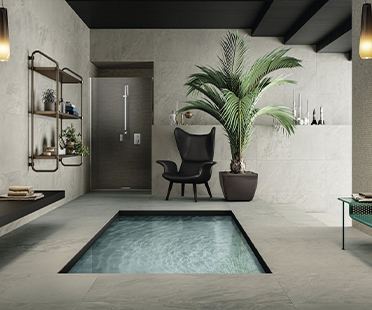27-01-2021
WHOSE THE FAULT: PLASTIC OR MAN?
theOtherDada, StudioSwine, Rossana Orlandi , Carlo Ratti,
Beirut, Lebanon, Milan, Tyrrhenian Sea, Atlantic Ocean,
ecosystem, Rossana Orlandi , Sea Shepherd, reuse, upcycling, Senso di Colpa, circular economy , Iris Ceramica Group, waste,
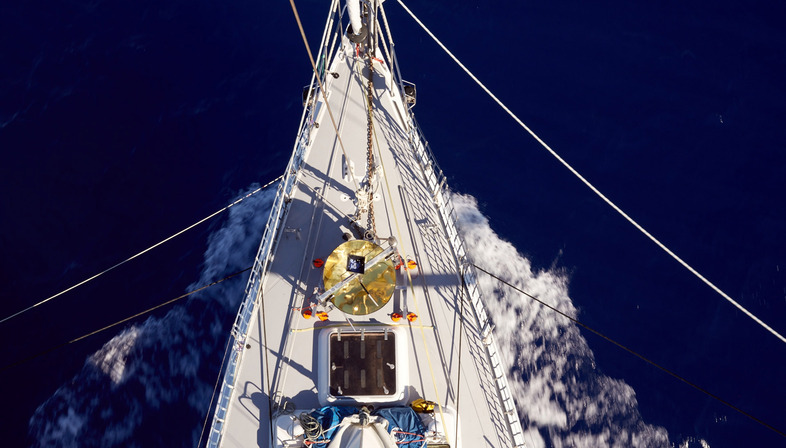 We are living in an era characterized by the consumerist voracity of man, who, due to his insatiable bulimia is completely altering the appearance of the planet: according to Prof. Ron Milo, an Israeli researcher of the Weizmann Institute of Science, the mass of industry-made materials equals the biomass, while the mass of our natural heritage has been practically reduced by almost half. In 2020, the global human-made mass surpassed all living biomass reaching 8 billion tons of plastic, exactly double the body mass of the entire animal population. Objects produced by man weigh more than those created by nature. And if we consider, as this study suggests, that “the world’s 7.6 billion people represent just 0.01% of all living things”, one can only be amazed by the enormity of the consequences caused by only one species that, abusing an insolently sovereign role, has earned for the geological era which it dominates, the term Anthropocene, regardless of being an infinitesimal part of a biosphere made up of many species.
We are living in an era characterized by the consumerist voracity of man, who, due to his insatiable bulimia is completely altering the appearance of the planet: according to Prof. Ron Milo, an Israeli researcher of the Weizmann Institute of Science, the mass of industry-made materials equals the biomass, while the mass of our natural heritage has been practically reduced by almost half. In 2020, the global human-made mass surpassed all living biomass reaching 8 billion tons of plastic, exactly double the body mass of the entire animal population. Objects produced by man weigh more than those created by nature. And if we consider, as this study suggests, that “the world’s 7.6 billion people represent just 0.01% of all living things”, one can only be amazed by the enormity of the consequences caused by only one species that, abusing an insolently sovereign role, has earned for the geological era which it dominates, the term Anthropocene, regardless of being an infinitesimal part of a biosphere made up of many species. This critically compromised environmental scenario does not really leave us many choices other than seriously thinking about how to stop extracting raw materials and try to reuse those we have in excess. The linear economy, emblem of consumerism, which grows by feeding on waste, not contemplating reuse but dumping, will have to radically change its direction and start planning to regenerate. Different strategies are being implemented to make possible a new circular productivity that, with great efficiency and less dissipation, will give to the products a longer-life. Techniques, extending from repairing, reusing to regenerating are part of this renewed working panorama, and huge investments have already been planned by many for upcycling separated materials, waste, transforming them into products with greater value, avoiding recycling which, due to progressive re-processing, implies a loss of quality.
The design that, as created by man, is by its nature an artificial activity and has a pivotal mission in the consumerist society, can represent a turning point with efficient and decisive solutions, accompanying us on this path and playing a real role of resilience towards that sustainable future, which is the goal we aspire to achieve. Fashion, as the textile industry in general, has proved to be the largest polluter in the world after oil. An enormous commitment is therefore expected from this sector to stem and reduce the violent and ruinous ecological impact. Fashion houses are announcing new more eco-friendly fabrics but what they will have to face with greater urgency is to limit the enormous amount of disposal generated by multiple phases of single-use packaging and unpacking, along the many stages that dot the supply chains from producer to buyer. Packaging that, despite showing labels 'degradable or recyclable', has the primary function of protecting the products from damages, such as water, during the transport phase, and for this reason is made up of mostly high-performance non-degradable polymers. It is true, as some say, that everything is degradable sooner or later, but the time frame is crucial.
Super Wide Interdisciplinary New Explorers. Studio Swine. Photo courtesy of Studio Swine/Stills of Petr Krejčí.
Another particularly difficult obstacle to overcome during this journey of redemption concerns those millions of tons of plastic waste, that are produced every year in the world with only a negligible part recycled. The U.N. has set two deadlines: the challenge to renew the cycle of production, disposal and recycling of plastic within a period of time that extends up to 2030, to arrive then to what can be considered the final goal, a total reuse in 2040. The excessive amount of this waste, based on petroleum, represents a lethal threat to the marine and terrestrial ecosystems. The painful phenomenon has its roots in a very distant time and the enormous plastic sedimentary registered has reached record digits. Plastic has been designed to be virtually indestructible and never truly disappears, breaking down into smaller and smaller pieces that settle at the bottom of the sea only after hundreds of years.
Super Wide Interdisciplinary New Explorers. Studio Swine. Photo courtesy of Studio Swine/Stills of Petr Krejčí.
Many young creatives dedicate all their energy to this plague, certainly as painful and difficult to solve as stimulating for their volcanic minds. In 2014, a studio very attentive to environmental issues embarked on a sea voyage of 1000 nautical miles across the Atlantic Ocean. The adventure, according to Azusa Murakami and Alexander Groves, co-founders of Studio Swine, Super Wide Interdisciplinary New Explorers, was undertaken in search of treasures. What they found, tiny fragments floating on the surface of the water, sparkling just like gems, were collected, melted and extruded, thanks to a special passive device, driven by solar heat. Large gyres of waste have gradually formed in the oceans, one of these, the Great Pacific Garbage Patch, appears to be twice the size of Texas. The couple, an architect and an artist, intending to attest presence of other vortices existing in the world's oceans, decided to transform, with the innovative refinement that distinguishes them, the mass of debris dotted with vibrant spots of color, obtained by the Solar Extruder, into an artisanal collection of precious luxury items. Each piece was handcrafted in a limited edition, resembling particularly significant symbolic representations: animals and marine elements that are at risk of extinction, such as a turtle shell, a red coral or a whale tooth. A material, which has been by us so overused that it has been made unwanted, has been creatively elevated to a high valuable artisan testimony, focusing everyone's attention on the gravity of a situation that is causing a catastrophe for the ecosystem.
'Gyrecraft', Studio Swine. Photo courtesy of Studio Swine.
I was very impressed by an extremely poetic comparison that Enzo Mari had used to express how a creative tries to attract attention to his work. Just like the birds of paradise, that build beautiful architecture, using colorful stones and small sparkling splinters, to seduce the female, a designer forges his works by searching for small pebbles and tiny stones, the most vivid and colorful, to arouse wonder. I believe that this desire to capture the attention can be read in Swine's beautiful project. When aesthetics is not an end to itself, it can prove to be an excellent vector, capable of bringing us closer to completely immersive experiences, helping us, as in this case, to listen better to narratives that speak of anxieties and worries for a sadly depleted, exhausted world.
'Feel The Peel'. CRA-Carlo Ratti Associati for Eni. Photo courtesy of CRA.
At the moment, attempts are being made to limit as much as possible the quantities of materials used in each product, as well as implementing strategies for energy saving. The objects, permitting an easy disposal, are mainly single-material or dismountable into parts that can be easily reused in their respective supply chains. However, research is making a lot of progress and there are some who have already managed to decompose plant-based plastics, probably opening a new horizon that should allow multiple recycling, without altering the initial properties.
‘Ro Plastic - Master's pieces’. Rossana Orlandi. Padiglione Ferroviario milanese al Museo Scienza e Tecnologia Leonardo da Vinci.
A well-known curator of a Milanese gallery, an authentic landmark of contemporary design, I am referring to Rossana Orlandi, a true authority in the sector, a mythical talent scout, inexhaustible source of extremely innovative initiatives, has dedicated herself to a very stimulating and intelligent reflection, aimed at raising awareness towards environmental protection by addressing a campaign not against plastic, but against the abuse we make of it and the wrong way we get rid of it. "Plastic is an extraordinary material and it's only through mankinds’ use that it becomes polluting". Inspired by this belief, was born 'Guilty Feeling', a strong message that has inaugurated the project in 2018, attempting to shake people up, making them feel ‘guilty', and subsequently pushing them to reconsider their responsibilities.
‘Ro Plastic - Master's pieces’. Rossana Orlandi. Padiglione Ferroviario milanese al Museo Scienza e Tecnologia Leonardo da Vinci.
The idea sprouts with very clear vision and perspective, and consistently growing with coherence, foresees collateral initiatives, conceived to educate and promote more responsible lifestyles, above proposing stories that speak of re-use in extremely creative and poetic terms. I can recall, for example, the emblematic exhibition ‘Ro Plastic - Master's pieces’, a fascinating exaltation of the expressive potential of recycled plastic, entrusted to the fantastic imagination of internationally renowned designers, set up in an equally engaging context, inside the Milanese Railway Pavilion at Museo Scienza e Tecnologia Leonardo da Vinci. These unique, one-of-a-kind pieces, capable of enhancing sustainability with unprecedented experimentation and transforming a waste material into a resource of precious value, clearly expressed the deep conviction of a woman that an excellent design must and can safeguard our society and our planet.
‘Ro Plastic - Master's pieces’- Lucio Micheletti. Rossana Orlandi. Padiglione Ferroviario milanese al Museo Scienza e Tecnologia Leonardo da Vinci.
Follows the awareness of one’s duties, ‘RoGuitlessPlastic’, a phase that includes a series of competitions dedicated to solving the problem, contemplating a synergy between materials, design and technology. The dramatic environmental picture requires ideas full of positive energy and, animated by this ambition, now on its second edition, ‘RoPlasticPrize’, addresses an invitation to designers of all ages and nationalities, specialized in Industrial Design, Innovative Textile, Conscious Innovation Projects, Packaging Solutions, with the addition of a new category, Awareness on Communication. The five sectors cover with exhaustive completeness the most significant moments of a process that, against the harmful and improper use of plastic material, seeks solutions and proposals that can influence production and behavioral standards.‘To experiment, to innovate and to invent’, is the philosophy that urges the collective commitment required to alleviate a global ecological disaster.
Sea Shepherd. 'Operation Siso'. Aeolian Islands, in the Tyrrhenian Sea.
Many are the initiatives aimed at limiting the damage inflicted on a planet so mistreated. Iris Ceramica Group Foundation, active in the field of environmental protection, has been for several years now teaming up with the international organization Sea Shepherd, which since 1977 has been committed to protect our seas and the marine ecosystem. It is supporting ‘Operation Siso’, a campaign that tries to combat illegal fishing activities off the coast of the Aeolian Islands, in the Tyrrhenian Sea. Unfortunately, there are still many situations, demanding an intervention with an imperious voice, situations of very serious instability and danger. It will be up to us to choose with greater awareness, a sense of responsibility and cohesion the direction towards a possible salvation.Virginia Cucchi
Credits:
Cover Photo: Naja Bertolt Jensen. Unsplash.
https://studioswine.com/
1-6 Photo: Petr Krejčí film, Super Wide Interdisciplinary New Explorers. Studio Swine. Photo courtesy of Studio Swine.
7-9 Photo: Gyrecraft. Prodotti di Design di Studio Swine. Photo courtesy of Studio Swine
https://carloratti.com/
10-12 Photo: Feel The Peel. CRA-Carlo Ratti Associati for Eni. Photo courtesy of CRA.
CRA Team: Saverio Panata, Alessandro Tassinari, Oliver Kazimir, Luca Bussolino, CRA Graphic team: Pasquale Milieri, Gary di Silvio, Gianluca Zimbardi, Technical Sponsor for 3D Printing: WASP
https://www.rossanaorlandi.com/
13-27 Photo: ‘Ro Plastic - Master's pieces’ 2019. Rossana Orlandi and Nicoletta Orlandi Brugnoni. Padiglione Ferroviario milanese al Museo Scienza e Tecnologia Leonardo da Vinci. Photo courtesy of Rossana Orlandi.
https://theotherdada.com/
Beirut RiverLESS. theOtherDada.
https://fondazione.irisceramicagroup.it/impegni/ambiente-solidarieta/sea-shepherd
https://www.seashepherd.it/
Operation Siso. Sea Shepherd.










